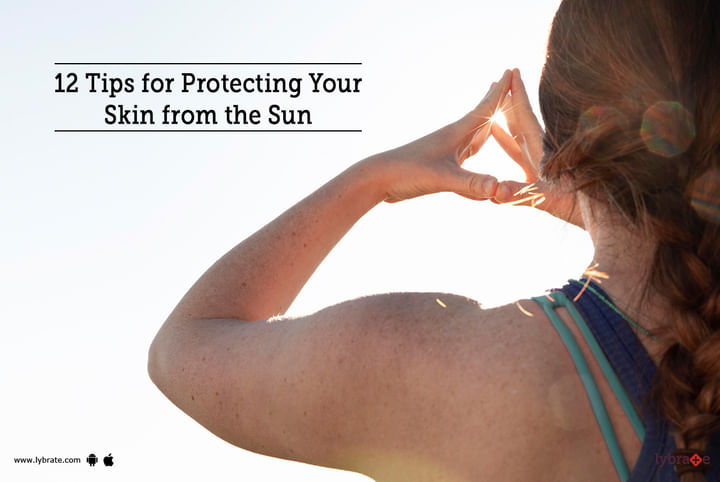12 Tips for Protecting Your Skin from the Sun
What is Hyperpigmentation and Hypopigmentation?
Hyperpigmentation and hypopigmentation are two conditions that affect the skin's colour. Hyperpigmentation occurs when there is an increase in melanin, a pigment that gives colour to the skin. This can happen because of excess sun exposure, acne scarring, hormonal imbalances, ageing or even as a side effect of certain medications.
Hypopigmentation is the opposite and happens when there is a decrease in melanin in the skin. This can result from infection, inflammation or injury to the skin. In either case, both conditions can cause patches of discoloration on the body which may be lighter or darker than surrounding areas.
What are the signs and symptoms of Hyperpigmentation and Hypopigmentation?
The most common signs and symptoms of hyperpigmentation include:
- Discoloured patches or areas on the skin (brown patches).
- Freckles in areas where it was never common before.
- Dark spots on your face. This is especially pronounced in the cheeks, forehead and around the eyes.
- Sunburns that leave discoloured marks behind even after they heal.
- Melasma or pregnancy mask which is a discoloration caused by hormonal fluctuations during pregnancy.
Hypopigmentation can be very subtle, barely noticeable changes on light-skinned individuals or it can be quite dramatic in people with darker skin tones affected by Vitiligo and other diseases. The most common signs and symptoms include:
- Loss of colour in certain areas (usually circular) which are considerably lighter than normal surrounding tissue.
- Patches with white hair growing from them.
- Areas where fingernails are lighter than those found elsewhere on the body.
- Loss of pigment around mouth, nose and eyes.
What are possible complications of Hyperpigmentation and Hypopigmentation?
- Complications of Hyperpigmentation: Hyperpigmentation can lead to physical and psychological distress due to the unappealing nature of the areas with darker pigmentation. In more severe cases it may be indicative of an underlying medical issue that must be addressed. Other complications include increased sensitivity to the sun, which can result in skin damage, broken capillaries and further skin discoloration.
- Complication of Hypopigmentation: Patients affected by hypopigmentation may be at an increased risk for developing skin cancer due to the loss of protective melanin. Additionally, the pigmentation loss can be linked to inflammatory and autoimmune conditions such as vitiligo and lupus erythematosus—neither condition is curable on its own and hypopigmented patches can remain for life unless successfully treated with skin grafting or other procedures.
12 Tips for Protecting Your Skin from the Sun
- Wear a broad-spectrum SPF of at least 30 every day, even on cloudy days and when you’re indoors.
- Apply sunscreen to all exposed areas of your skin 30 minutes before going outdoors.
- Wear protective clothing, such as hats with wide brims, long-sleeved shirts and pants, sunglasses, and clothing made from fabrics that protect against UVA/UVB radiation when possible.
- Reapply sunscreen every 2 hours, or after swimming or sweating heavily.
- Avoid tanning beds as they emit UVA rays which can increase the risk of developing skin cancer over time.
- Take extra precautions when participating in outdoor activities such as sports or hiking; make sure to wear protective gear such as long sleeves, a hat or visor so that you don’t accidentally leave any exposed areas uncovered while playing.
- Choose makeup items that contain SPF too so that you can continue protecting yourself throughout the day if reapplying sunscreen isn't an option.
- Avoid skin irritants: Any product or activity that causes irritation or inflammation on your skin can trigger hyperpigmentation or hypopigmentation. Try to switch to gentler products and eliminate any activities that involve unnecessary tugging on your skin, such as vigorous exfoliation or scrubbing during bathing.
- Eating an Ayurvedic diet can help balance Pitta dosha, which keeps hormones in check and prevents overactive melanocytes that lead to both hyperpigmentation and hypopigmentation. Increase your intake of herbs like turmeric, fenugreek, ginger, Indian gooseberry (amla), neem leaves and mint leaves while reducing your consumption of fried foods, processed foods, packaged foods and red meat.
- Rubbing in some oils can be beneficial for both types of pigmentary disorders as many herbal oils have excellent anti-inflammatory properties. Coconut oil has lauric acid which limits oxidative damage while sesame oil nourishes the skin deeply with its antioxidants powers aiding in lightening dark spots as well as helping hypo-pigmented areas get its natural complexion back again.
- Create a paste by mixing one tablespoon turmeric powder with two tablespoons sandalwood powder along with two tablespoons of rose water or milk to create a paste like consistency then apply it over affected areas for 20 minutes until it dries up completely followed by rinsing it off with warm water for desired results.
- Drinking enough water is important for healthy glowing skin especially when dealing with pigmentation issues make sure you stay hydrated at all times.
What are the surgical treatments for Hyperpigmentation and Hypopigmentation?
The most common treatments for both hyper- and hypopigmented areas include dermabrasion, laser therapy, microdermabrasion and chemical peels.
- Dermabrasion: This type of surgical treatment involves scraping or sanding away the outer layer of skin using a spinning brush or wire brush to reduce discolorations caused by either condition. It is typically used on larger areas of discoloration that do not respond to more conservative treatments.
- Laser Therapy: Laser therapy works by targeting and breaking up pigmented cells in the skin using focused light impulses which can help even out discolorations over time with fewer risks than other treatments such as dermabrasion or chemical peels.
- Microdermabrasion: This type of treatment uses tiny crystals sprayed onto the surface layer of your skin that act as an abrasive and help remove dead skin cells while stimulating collagen production in the underlying layers which can aid in treating hyperpigmentation or hypopigmentation due to sun damage or ageing.
- Chemical Peels: Chemical peels are a type of surgical treatment that uses caustic solutions to peel away layers of damaged skin while exfoliating dead cells on the surface level, leaving behind healthier tissue that can improve texture and overall complexion, including treating both hyperpigmented and hypopigmented patches on your face or other parts of your body such as hands or neck area.
Best doctors to consult for Hyperpigmentation and Hypopigmentation? explain pointwise
Depending on the severity of hyperpigmentation and hypopigmentation, there are several different types of doctors that may be consulted. Here is a list of some potential doctors and a brief explanation of their roles:
Dermatologist: A dermatologist specialises in skin care and can diagnose, treat, and manage conditions affecting the skin, hair, and nails. A dermatologist will be able to help diagnose the cause of hyperpigmentation or hypopigmentation as well as provide treatments such as laser therapies or topical creams that can lighten or darken skin pigment.
Primary Care Physician (PCP): A PCP specialises in overall wellness and can provide advice on how to improve general health if an underlying condition is causing pigmentation changes. A PCP may also refer you to a specialist who has more thorough knowledge in treating pigmentation issues if needed.
Endocrinologist: An endocrinologist specialises in hormones that affect our body's various systems, including skin pigment production. Consulting an endocrinologist may be useful if abnormal levels of hormones are contributing to hyperpigmentation or hypopigmentation.
Plastic Surgeon: If the area with hyperpigmentation or hypopigmentation needs more treatment than is available from other specialties, a plastic surgeon might be consulted for treatments such as bleaching or skin grafting.



+1.svg)
